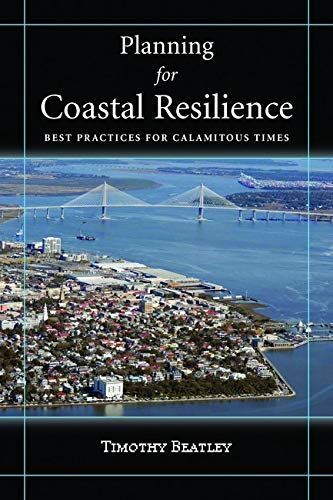
Planning for Coastal Resilience Best Practices for Calamitous Times
Climate change is predicted to increase the frequency and magnitude of coastal storms around the globe, and the anticipated rise of sea levels will have enormous impact on fragile and vulnerable coastal regions. In the U.S., more than 50% of the population inhabits coastal areas. In Planning for Coastal Resilience, Tim Beatley argues that, in the face of such threats, all future coastal planning and management must reflect a commitment to the concept of resilience. In this timely book, he writes that coastal resilience must become the primary design and planning principle to guide all future development and all future infrastructure decisions. Resilience, Beatley explains, is a profoundly new way of viewing coastal infrastructure—an approach that values smaller, decentralized kinds of energy, water, and transport more suited to the serious physical conditions coastal communities will likely face. Implicit in the notion is an emphasis on taking steps to build adaptive capacity, to be ready ahead of a crisis or disaster. It is anticipatory, conscious, and intentional in its outlook. After defining and explaining coastal resilience, Beatley focuses on what it means in practice. Resilience goes beyond reactive steps to prevent or handle a disaster. It takes a holistic approach to what makes a community resilient, including such factors as social capital and sense of place. Beatley provides case studies of five U.S. coastal communities, and “resilience profiles” of six North American communities, to suggest best practices and to propose guidelines for increasing resilience in threatened communities.